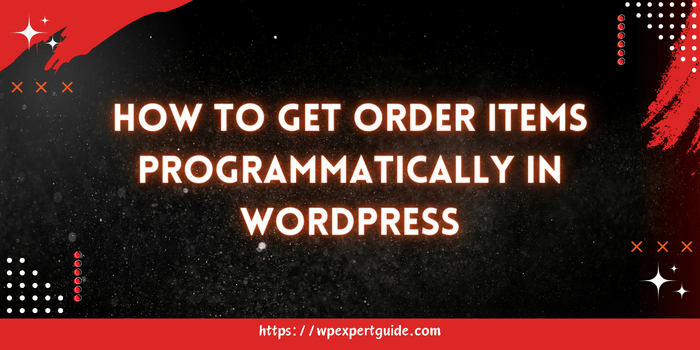How to Get Order Items Programmatically in WordPress

Managing an eCommerce site on WordPress, especially if you’re using WooCommerce, often requires custom solutions to handle orders programmatically. Whether you’re looking to generate custom reports, automate workflows, or perform batch processing of orders, accessing order items programmatically can significantly streamline your operations.
In this blog post, we’ll walk you through the steps to retrieve order items programmatically in WordPress using WooCommerce. We’ll cover the essentials and provide some practical examples to help you get started.
Prerequisites
Before diving into the code, make sure you have:
- A WordPress Site: Set up and running.
- WooCommerce Plugin: Installed and activated.
- Basic PHP Knowledge: Familiarity with PHP will be helpful.
Accessing Orders Programmatically
WooCommerce provides a robust API to interact with orders programmatically. The main class you’ll interact with is WC_Order, which provides methods to retrieve order details.
1. Load an Order by ID
First, you need to load an order using its ID. Here’s how you can do it:
$order_id = 123; // Replace with your order ID
$order = wc_get_order($order_id);
if ($order) {
// Order loaded successfully
echo 'Order ID: ' . $order->get_id();
} else {
echo 'Order not found';
}2. Get Order Items in WordPress
Once you have the order object, you can retrieve the items within the order. The WC_Order class provides the get_items() method for this purpose.
$order_items = $order->get_items();
foreach ($order_items as $item_id => $item) {
$product_name = $item->get_name();
$product_quantity = $item->get_quantity();
$product_total = $item->get_total();
echo 'Product: ' . $product_name . '<br>';
echo 'Quantity: ' . $product_quantity . '<br>';
echo 'Total: ' . $product_total . '<br>';
}3. Accessing Product Details
Each item in the order can provide more detailed information about the product. For instance, you might want to retrieve the product SKU, price, or custom meta data.
foreach ($order_items as $item_id => $item) {
$product_id = $item->get_product_id();
$product = $item->get_product();
if ($product) {
$sku = $product->get_sku();
$price = $product->get_price();
echo 'Product ID: ' . $product_id . '<br>';
echo 'SKU: ' . $sku . '<br>';
echo 'Price: ' . $price . '<br>';
}
}4. Retrieving Custom Meta Data
If you’ve added custom fields to your products or order items, you can retrieve this data as well.
foreach ($order_items as $item_id => $item) {
$custom_field_value = $item->get_meta('custom_field_key', true);
echo 'Custom Field Value: ' . $custom_field_value . '<br>';
}5. Example: Generating a Custom Report
Let’s put it all together in a practical example where we generate a simple custom report of all orders within a specific date range.
// Define the date range
$start_date = '2024-01-01';
$end_date = '2024-12-31';
// Query orders within the date range
$args = array(
'status' => 'completed',
'date_created' => $start_date . '...' . $end_date,
);
$orders = wc_get_orders($args);
if (!empty($orders)) {
foreach ($orders as $order) {
echo 'Order ID: ' . $order->get_id() . '<br>';
echo 'Order Date: ' . $order->get_date_created()->date('Y-m-d H:i:s') . '<br>';
$order_items = $order->get_items();
foreach ($order_items as $item) {
$product_name = $item->get_name();
$product_quantity = $item->get_quantity();
$product_total = $item->get_total();
echo 'Product: ' . $product_name . '<br>';
echo 'Quantity: ' . $product_quantity . '<br>';
echo 'Total: ' . $product_total . '<br>';
}
echo '<hr>';
}
} else {
echo 'No orders found in the specified date range.';
}Conclusion
By leveraging the WooCommerce API, you can efficiently access and manipulate order data programmatically. This capability is incredibly useful for custom reporting, automating tasks, and extending the functionality of your eCommerce site. The examples provided here should give you a solid foundation to start working with WooCommerce orders in your projects.
Remember to test your code in a staging environment before deploying it to your live site to ensure it works as expected without disrupting your business operations. Happy coding!
